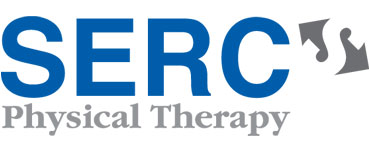The rotator cuff is a group of four muscles/tendons in the shoulder that stabilize the joint, allowing us to move our arms in space and rotate our upper arms.
Rotator cuff injuries are common: More than 500,000 people each year will undergo surgery for rotator cuff-related dysfunction. Tears range from small to massive, and can result from wear and tear or from a recent injury. Each injury and surgery is unique, and this will determine your post-operative course of physical therapy or recovery?.
The information below provides a general guideline of what to expect.
BEFORE SURGERY
Questions to ask your doctor:
- What is the success rate of this surgery?
- Are there alternatives to this procedure?
- What are the risks vs. benefits of this surgery?
- How soon will I be starting physical therapy?
- How long will I be in a sling?
- How long before I can return to (insert desired activity here)?
Your doctor may recommend physical therapy before surgery to improve strength and range of motion (ROM).
AFTER SURGERY
Ask your surgeon specifically what was done to your shoulder. Typically, pictures the surgeon took during surgery of the damage and repair inside your shoulder are available to give you a better understanding.
Sleeping:
- It is normal to have difficulty sleeping and getting comfortable at night after your surgery.
- Most people sleep propped up on pillows in bed or in a recliner for a few nights up to several weeks depending on the extent of their surgery and pain tolerance.
Activity restrictions:
- Expect to be in a sling for two to six weeks.
- Lifting typically is limited to three or four pounds for up to three months depending on the size of the tear.
- Return to more-vigorous activity and sports can be postponed for anywhere from six months to a year.
Daily activities:
- Expect to have some challenges with daily activities such as dressing, showering, eating and going to the bathroom, especially if surgery is on your dominant arm.
- It is a good idea to have a family member or close friend around for those times of day until you get comfortable performing these activities.
Physical therapy:
- Formal PT will begin any time from the day after your surgery to six weeks after surgery depending on your surgeon’s preference.
- Frequent PT visits (three times per week) often are recommended to limit shoulder stiffness.
- Initial treatments will focus on pain management and be limited to ROM by the therapist or assisted ROM with a pulley or stick.
- After four to six weeks of ROM exercises, you will begin exercises to regain strength
- The strengthening progression typically takes an additional 12-16 weeks depending on your goals and the activities you desire to resume.
- The ultimate goal is to regain all motion and strength and to return to pain-free activity.
Work:
- Depending on what your job requires, you may be able to return soon after surgery.
- Continued pain, the need for medication, inability to drive, or jobs that require you to lift or carry objects may delay your return.
Reminders:
- Take your NSAID (nonsteroidal anti-inflammatory drugs) and pain medications as prescribed by physician.
- Ice the surgical area for 15 minutes out of every hour to reduce pain and swelling.
- Be aware of signs of infection (fever, chills, redness and heat around incision, and abnormal drainage from the incision).
Just remember that this is a marathon, not a sprint. Your surgeon put the rotator cuff back where it normally attaches, but it still has to heal for approximately three or four months.
Listen to your surgeon and physical therapist and put in the necessary time to recover in order to give yourself the best chance to return to an active life.
